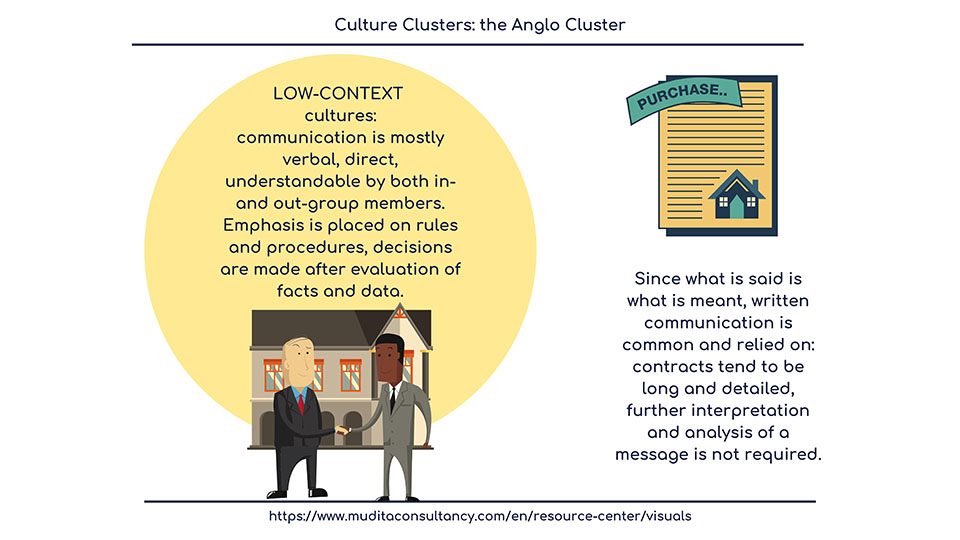The Anglo Cluster
This is the story of America. Everybody's doing what they think they're supposed to do.
- Jack Kerouac, On The Road -
As anticipated in the previous article , the Globe Project - a study on cross-cultural leadership - groups the societal cultures object of the research into ten major culture clusters, characterised by nine cultural dimensions.
The guilt-based Anglo (Anglo-American, actually) cluster - that includes Australia, English speaking Canada, New Zealand, Ireland, UK, South Africa (white sample) and the United States of America - is characterised by direct communication (low-context cultures), a strong future orientation (monochronic time), high levels of individualism, a doing orientation, a competitive attitude, a moderate tolerance to risk, fairly low levels of power-distance.
In this cluster people tend to value individual rights and to believe that everyone is responsible for their own success, high-performance tends to be expected, material wealth is is admired: the society in the Anglo- American cluster favours high achievers and risk takers.
With regard to leadership, it’s worth noting that all the countries in this cluster are democracies: people expect to be involved in the decision- making process, to be able to share their view, to have the right to challenge authority figures. As a consequence, the ideal leader for Anglo- American societies is charismatic (inspirational/visionary/decisive), team- oriented and participative, while a self-protective leadership style (status conscious, self-centered) is not appreciated.
***
Related posts:
- The Sub-Saharan Africa Cluster
- The Middle East Cluster
- The Latin Europe Cluster
- The Germanic Europe Cluster
- The Eastern Europe Cluster
- The Nordic Cluster
- The Latin America Cluster
- The Southern Asia Cluster
- The Confucian Asia Cluster
***
SOURCES:
- House, R. J., Hanges, P. J., Javidan, M., Dorfman, P. W., & Gupta, V. (2004). "Culture, leadership, and organizations: The GLOBE study of 62 societies". CA: Thousand Oaks
- Hall, E. T. (1959). “The Silent Language”. New York: Doubleday
- Hall, E.T. (1966). "The Hidden Dimension". New York: Doubleday
- Hall, E. T. (1976). "Beyond culture". New York, NY: Doubleday
- The Globe Project, Online: https://globeproject.com/
- Hofstede, Geert H. (1997). "Cultures and Organizations: Software of the Mind". New York: McGraw-Hill
- Herbert R. (1946). “The chrysanthemum and the sword: patterns of Japanese culture”. Boston : Houghton Mifflin Co.
- Kluckhohn, F. and Strodtbeck, F. (1961). "Variations in value orientation". New York: Harper Collins
- Gudykunst, W. B., & Kim, Y. Y. (1984). "Communicating with strangers: An approach to intercultural communication". New York: Random House
- Hiebert, Paul G. (1985). ”Anthropological Insights for Missionaries”. Grand Rapids: Baker Book House
Disclosure: This post contains affiliate links. If you decided to buy any of the products listed here, I would earn a small commission (at no additional cost to you).











